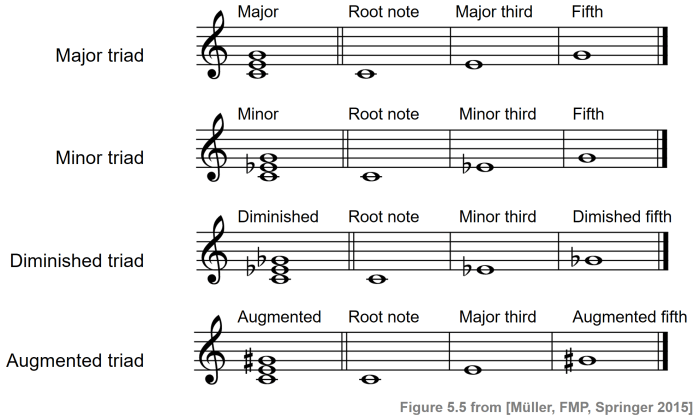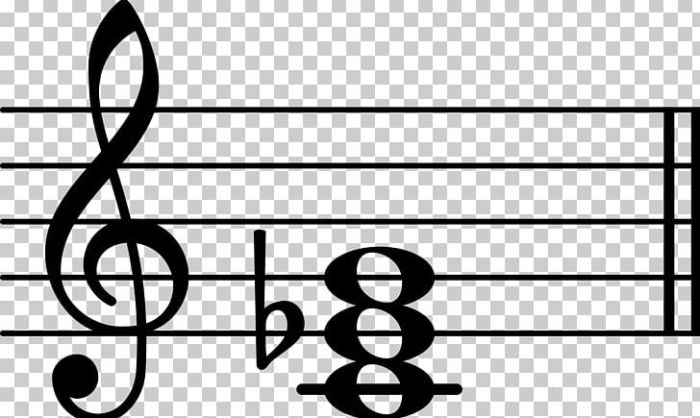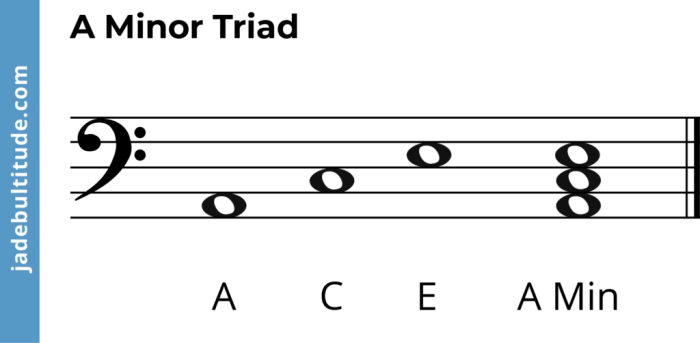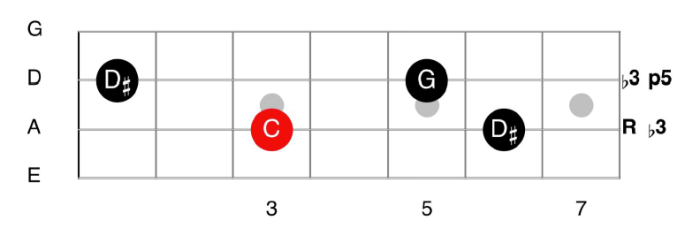D minor triad bass clef – Embark on a musical adventure with the D minor triad in bass clef, a fundamental building block in the world of music. Its distinctive sound and versatile applications make it a must-know for musicians of all levels.
Prepare to delve into the intricacies of the D minor triad, exploring its composition, fingering, inversions, and musical significance. This comprehensive guide will equip you with the knowledge and skills to master this essential triad.
Introduction: D Minor Triad Bass Clef
In the realm of music theory, the D minor triad stands as a fundamental building block, serving as a harmonious foundation for countless musical compositions. Residing in the bass clef, this triad possesses a distinct character that sets it apart from its major counterpart.
The D minor triad is comprised of three notes: D (the root), F (the minor third), and A (the perfect fifth). Its structure follows the pattern of a minor third (three half steps) followed by a major third (four half steps).
This unique combination of intervals lends the triad its characteristic melancholic and introspective quality.
Fingering and Intervals

Let’s delve into the fingering and intervals of the D minor triad in the bass clef.
Fingering
The fingering for the D minor triad in the bass clef is 1-3-5. This means that the first finger plays the D note, the third finger plays the F note, and the fifth finger plays the A note.
Intervals
The intervals between the notes of the D minor triad are a minor third and a perfect fifth. A minor third is an interval of three half steps, and a perfect fifth is an interval of seven half steps.
Inversions

In music theory, inversions are variations of a chord where the notes are rearranged to create different voicings. The D minor triad has three inversions, each with its own unique sound and uses.
First Inversion
The first inversion of the D minor triad is called the D minor first inversion, or Dmin/F. It consists of the notes F (root), A (third), and D (fifth). This inversion has a more open and spacious sound than the root position, and it is often used in arpeggiated passages or as a transition between other chords.
Second Inversion
The second inversion of the D minor triad is called the D minor second inversion, or Dmin/A. It consists of the notes A (root), D (third), and F (fifth). This inversion has a more somber and introspective sound than the other inversions, and it is often used in slower, more expressive passages.
Third Inversion
The third inversion of the D minor triad is called the D minor third inversion, or Dmin/C. It consists of the notes C (root), F (third), and A (fifth). This inversion has a more dissonant and unstable sound than the other inversions, and it is often used in passages that require a sense of tension or release.
Musical Applications

The D minor triad is a versatile and commonly used chord in various musical genres. Its somber and introspective quality makes it suitable for expressing emotions of sadness, longing, and contemplation.
Pieces Featuring the D Minor Triad
- Clair de Luneby Claude Debussy: The opening measures of this iconic piano piece feature the D minor triad, setting the tone for its dreamy and melancholic atmosphere.
- Ave Mariaby Franz Schubert: This beloved choral work employs the D minor triad as the harmonic foundation for its serene and молитва-like melody.
- Symphony No. 5 in C minorby Ludwig van Beethoven: The first movement of this symphony opens with a powerful D minor triad, establishing the dramatic and foreboding mood of the piece.
Comparison to Other Triads

The D minor triad shares similarities and differences with other minor triads in the bass clef. Understanding these comparisons can enhance our comprehension of the D minor triad and its role within the harmonic system.
The d minor triad in bass clef is a fundamental chord for musicians. It’s commonly used in various musical genres and can be a great starting point for learning music theory. Speaking of starting points, if you’re looking for a fun way to improve your vocabulary, check out o b j e c t unscramble . It’s a word game that can help you unscramble letters to form new words.
Returning to our d minor triad, it’s worth noting that it’s composed of the notes D, F, and A, and is often used to create a sense of sadness or melancholy in music.
All minor triads in the bass clef consist of a root note, a minor third interval above the root, and a perfect fifth interval above the root. This fundamental structure defines their minor quality.
Similarities
- All minor triads share the same intervallic structure: root, minor third, perfect fifth.
- They evoke a similar emotional response, characterized by a sense of sadness or melancholy.
Differences
- The root note of each minor triad distinguishes it from others. The D minor triad, for instance, has a root note of D, while the E minor triad has a root note of E.
- The specific pitches used to form the intervals vary depending on the root note. This results in different sounding triads despite their shared intervallic structure.
Harmonic Analysis

The D minor triad, like other triads, can take on different harmonic functions depending on its context within a musical piece. These functions include:
- Tonic:The D minor triad can serve as the tonic, or home key, of a piece in the key of D minor. In this role, it provides a sense of stability and resolution.
- Subdominant:The D minor triad can also function as the subdominant, or fourth scale degree, in keys such as G major or B-flat major. In this context, it creates a sense of movement and progression.
- Dominant:In keys such as A minor or C major, the D minor triad can function as the dominant, or fifth scale degree. In this role, it creates a sense of tension and anticipation, leading to the resolution of the tonic.
The D minor triad can also be used to create different moods and emotions in music. For example, in a minor key, it can evoke feelings of sadness or melancholy, while in a major key, it can create a more somber or reflective mood.
Harmonic Progression, D minor triad bass clef
The D minor triad can be used in a variety of harmonic progressions. Some common progressions include:
- I- IV – V: This is a common progression in minor keys that creates a sense of movement and resolution.
- I- vi – IV – V: This is a more extended progression that adds a sense of depth and richness to the music.
- I- V – vi – IV: This is a descending progression that can create a sense of sadness or melancholy.
The D minor triad is a versatile harmonic tool that can be used to create a wide range of moods and emotions in music. Its harmonic function and context within a piece will determine its specific effect.
Exercises and Practice Techniques

Developing proficiency in playing the D minor triad in the bass clef requires consistent practice and targeted exercises. These exercises will enhance your technique, improve accuracy, and foster familiarity with the fingering and intervals.
Tips for Improving Technique and Accuracy
- Maintain proper posture with a relaxed body and hands.
- Use a light touch on the keys and avoid excessive pressure.
- Focus on smooth finger movements and accurate placement.
- Practice slowly and gradually increase the tempo as you gain confidence.
- Use a metronome to maintain a steady rhythm.
Exercises to Practice Playing the D Minor Triad
- Scale Exercise:Play the D minor scale in the bass clef, incorporating the triad positions as you ascend and descend.
- Arpeggio Exercise:Break down the triad into its individual notes and practice playing them in ascending and descending arpeggios.
- Chord Progression Exercise:Practice transitioning between the D minor triad and other chords in the key, such as Gm, C, and F.
- Bass Line Exercise:Create bass lines using the D minor triad as the foundation and experiment with different rhythms and patterns.
- Sight-Reading Exercise:Find sheet music that includes the D minor triad and practice reading and playing it accurately.
Frequently Asked Questions
What is the composition of the D minor triad in bass clef?
The D minor triad consists of the notes D, F, and A, arranged in ascending order from the root note, D.
How do I finger the D minor triad in bass clef?
For the root position, use your first finger on D, third finger on F, and fourth finger on A.
What are the three inversions of the D minor triad?
The three inversions are first inversion (F in the bass), second inversion (A in the bass), and third inversion (D in the treble).